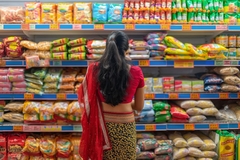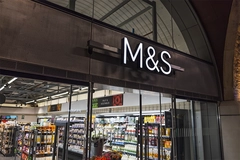
- Industry news
Industry news
- Category news
Category news
- Reports
- Key trends
- Multimedia
- Journal
- Events
- Suppliers
- Home
- Industry news
Industry news
- Category news
Category news
- Reports
- Key trends
- Multimedia
- Events
- Suppliers
Chr. Hansen Introduces Innovative Natural Wine Improving Ingredient

Viniflora Freasy naturally softens the wine mouth-feel by transforming malic acid into lactic acid, producing additional flavors and stabilizing wines.
Jan 17 2012 --- Chr. Hansen has revealed a new groundbreaking technology, available to small and medium sized wineries. Global wine producers and purchasers are focusing their attention on malolactic fermentation, which naturally softens the wine mouth-feel by transforming malic acid into lactic acid, producing additional flavors and stabilizing wines.
Nearly 10% of the global wine production of 2.30 billion liters is today inoculated with malolactic cultures, and Chr. Hansen has good news for this growing segment: The launch of Viniflora Freasy as part of its portfolio of natural oenological frozen products renowned for their high quality, performance and lower cost-in-use compared to other technologies. Storable at -18°C: Easier for small and medium size wineries “Viniflora Freasy CH16 is a new tool for winemakers to manage the malolactic fermentation in high pH, high alcohol wines without producing biogenic amines such as histamine during fermentation – well in line with today’s strict focus on food safety.

Speaking to FoodIngredientsFirst Laurent Hubert, Chr. Hansen’s Marketing Director said “The product will be used in South Africa and Australia by next week. The new strain is meant to be used in red wines coming from warm climates, very sunny locales such as Southern Europe, South Africa, Australia and the Western Part of the US. It is part of the recipe to particular wines. It is a natural ingredient so you do not have to label the product when you use it in a wine.
Not only can it be inoculated directly in the wine – we have also overcome a major technological obstacle ensuring that winemakers can now get access to the best performing product available on the market without buying a -50°C freezer to store it. A standard -18°C freezer is good enough to keep all the good features of these frozen cultures which is a huge advantage to small and medium sized wineries,” Hubert continued.
“By changing some steps in the production of Viniflora cultures we can deliver the product at -50°C to all our distributors, who on their part deliver the deeply frozen cultures to winemakers. At the winery they can be stored at -18 °C for up to 12 weeks before they are used ensuring maximum flexibility for the winemakers. They can avoid the time-consuming bulk starter cultures and instead benefit from the convenient and lowest-cost-in-use technology on the market. This is likely to change the landscape within the world of winemaking,” underlines Laurent Hubert.
The Freasy product is delivered frozen in a ‘ready to be used’ carton, each carton containing enough cultures to initiate and manage the malolactic fermentation in 5 KL of wine.
After two years of tests in South Africa and France the groundbreaking Freasy technology will first be available in South Africa and Australia for the 2012 vintage.
by Michael Holt









